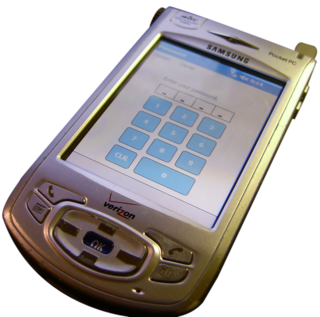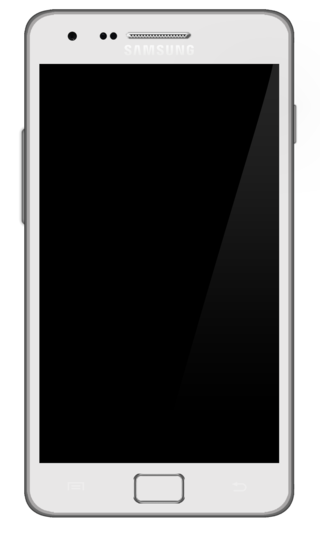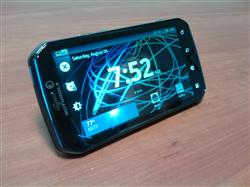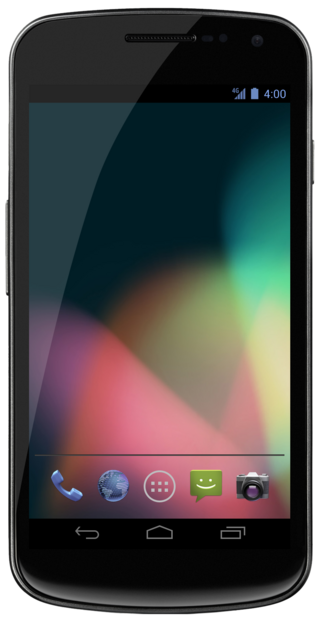A personal communications service (PCS) is set of communications capabilities that provide a combination of terminal mobility, personal mobility, and service profile management. This class of services comprises several types of wireless voice or wireless data communications systems, typically incorporating digital technology, providing services similar to advanced cellular mobile or paging services. In addition, PCS can also be used to provide other wireless communications services, including services that allow people to place and receive communications while away from their home or office, as well as wireless communications to homes, office buildings and other fixed locations. Described in more commercial terms, PCS is a generation of wireless cellular-phone technology, that combines a range of features and services surpassing those available in analogue- and first-generation (2G) digital-cellular phone systems, providing a user with an all-in-one wireless phone, paging, messaging, and data service.

A smartphone is a mobile device that combines the functionality of a traditional mobile phone with advanced computing capabilities. It typically has a touchscreen interface, allowing users to access a wide range of applications and services, such as web browsing, email, and social media, as well as multimedia playback and streaming. Smartphones have built-in cameras, GPS navigation, and support for various communication methods, including voice calls, text messaging, and internet-based messaging apps.

A clamshell design is a kind of form factor for electronic devices in the shape of a clamshell. Mobile phones, handheld game consoles, and especially laptops, are often designed like clamshells. Clamshell devices are usually made of two sections connected by a hinge, each section containing either a flat panel display or an alphanumeric keyboard/keypad, which can fold into contact together like a bivalve shell.

Cricket Wireless is an American wireless service provider, owned by AT&T. It provides wireless services to ten million subscribers in the United States. Cricket Wireless was founded in March 1999 by Leap Wireless International. AT&T acquired Leap Wireless International in March 2014, and later merged Cricket Wireless operations with Aio Wireless. Cricket Wireless competes primarily against T-Mobile's Metro by T-Mobile, Dish's Boost Mobile and Verizon's Visible in the prepaid wireless segment.

The StarTAC is a series of mobile phones released by Motorola starting in 1996. It is the successor of the MicroTAC, a semi-clamshell design first launched in 1989. Whereas the MicroTAC's flip folded down from below the keypad, the StarTAC folded up from above the display. The StarTAC was among the first mobile phones to gain widespread consumer adoption; approximately 60 million StarTACs were sold.
Wi-Fi calling refers to mobile phone voice calls and data that are made over IP networks using Wi-Fi, instead of the cell towers provided by cellular networks. Using this feature, compatible handsets are able to route regular cellular calls through a wireless LAN (Wi-Fi) network with broadband Internet, while seamlessly change connections between the two where necessary. This feature makes use of the Generic Access Network (GAN) protocol, also known as Unlicensed Mobile Access (UMA).

The SPH-i700 is a Windows Mobile-powered mobile phone manufactured by Samsung of Korea. It is a powerful and expandable second generation Pocket PC phone compared to others in its class. It includes a transflective display, a VGA camera, 300 MHz Processor and supports SDIO, making it a competent PDA. It includes a complete bundle of accessories, including: a case, stereo headset-mic, cradle and both a regular and extended battery. The wireless radio was reported to get strong signals, and offered good voice quality and fast data speeds on Verizon's Express Network. The unit runs the Pocket PC 2002 Phone Edition OS, and in July 2004, Verizon started shipping units running Windows Mobile 2003 Phone Edition. Windows Mobile 2003 Phone Edition offers the same improvements found in regular Pocket PCs running this OS: improved Pocket Internet Explorer, always on networking, an improved networking connection manager and overall speed improvements. Samsung makes a similar model called the SGH-i700 which is identical to the SPH-i700 except for it works on the GSM/GPRS network.
In telecommunications, long-term evolution (LTE) is a standard for wireless broadband communication for mobile devices and data terminals, based on the GSM/EDGE and UMTS/HSPA standards. It improves on those standards' capacity and speed by using a different radio interface and core network improvements. LTE is the upgrade path for carriers with both GSM/UMTS networks and CDMA2000 networks. Because LTE frequencies and bands differ from country to country, only multi-band phones can use LTE in all countries where it is supported.
The form factor of a mobile phone is its size, shape, and style, as well as the layout and position of its major components.

The Samsung Galaxy S is a touchscreen-enabled, slate-format Android smartphone designed, developed, and marketed by Samsung Electronics; it is the first smartphone of the Samsung Galaxy S series. It is the first device of the third Android smartphone series produced by Samsung. It was announced to the press in March 2010 and released for sale in June 2010. Due to shortage of Super AMOLED displays, Samsung released a successor to the device called S scLCD or SL and ceased production of the original I9000 model.

The Samsung Galaxy Tab 7.0 or simply Samsung Galaxy Tab is an Android-based mini-tablet computer produced by Samsung and released on 5 November 2010. The tablet was first introduced on 2 September 2010 at the IFA in Berlin. The Galaxy Tab was the first Samsung Android-powered tablet to be released.

The Samsung Galaxy S II is a touchscreen-enabled, slate-format Android smartphone designed, developed, and marketed by Samsung Electronics, as the second smartphone of the Samsung Galaxy S series. It has additional software features, expanded hardware, and a redesigned physique compared to its predecessor, the Samsung Galaxy S. The S II was launched with Android 2.3.4 "Gingerbread", with updates to Android 4.1.2 "Jelly Bean".

The Motorola Photon 4G was a high end Android-based mobile smartphone that was distributed exclusively by Sprint. A very similar model was available as the Motorola Electrify from U.S. Cellular.

The Galaxy Nexus (GT-I9250) is a touchscreen Android smartphone co-developed by Google and Samsung Electronics. It is the third smartphone in the Google Nexus series, a family of Android consumer devices built by an original equipment manufacturer partner. The phone is the successor to Google's previous flagship phones, the Nexus One and Nexus S.
The smartphone wars or smartphone patents licensing and litigation refers to commercial struggles among smartphone manufacturers including Sony Mobile, Google, Apple Inc., Samsung, Microsoft, Nokia, Motorola, Huawei, LG Electronics, ZTE and HTC, by patent litigation and other means. The conflict is part of the wider "patent wars" between technology and software corporations.

The Samsung Galaxy Note II is an Android phablet smartphone. Unveiled on August 29, 2012 and released in October 2012, the Galaxy Note II is a successor to the original Galaxy Note, incorporating improved stylus functionality, a larger 5.5-inch (140 mm) screen, and an updated hardware and casing design based on that of the Galaxy S III.

The Samsung Galaxy Alpha (SM-G850x) is an Android smartphone produced by Samsung Electronics. Unveiled on 13 August 2014, the device was released in September 2014. A high-end device, the Galaxy Alpha is Samsung's first Android-powered smartphone to incorporate a metallic frame, although the remainder of its physical appearance still resembles previous models such as the Galaxy S5. It also incorporates Samsung's new Exynos 5430 system-on-chip, which is the first mobile system-on-chip to use a 20 nanometer manufacturing process.

Samsung Electronics Co., Ltd. is a South Korean multinational major appliance and consumer electronics corporation headquartered in Yeongtong-gu, Suwon, South Korea. It is currently the pinnacle of the Samsung chaebol, accounting for 70% of the group's revenue in 2012.

A foldable smartphone is a smartphone with a folding form factor. It is reminiscent of the clamshell design of many earlier feature phones. Some variants of the concept use multiple touchscreen panels on a hinge, while other designs utilise a flexible display. Concepts of such devices date back as early as Nokia's "Morph" concept in 2008, and a concept presented by Samsung Electronics in 2013, while the first commercially available folding smartphones with OLED displays began to emerge in November 2018.















